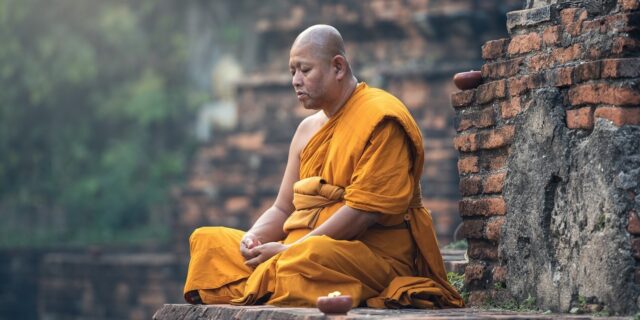I went to a 10-day Vipassana meditation course in Thailand in mid-February, and let me tell you, it was a completely mind-blowing experience. The course is held at a Buddhist temple–a quiet, serene place that was definitely not what I was expecting. They provide you with a 2-bed dorm room, toiletries, and a daily meal. You are encouraged to take a day off from the course to explore Chiang Mai, but staying at the temple was the perfect place to begin my journey.
A 10-day Vipassana meditation course for beginners, taught by a meditation master, close to home. This course is aimed at those who want to enlighten themselves and quieten the mind, and to gain insight into the mechanisms of human suffering. In this course, you will be introduced to the basics of Vipassana meditation, given a course-by-course description of the most important practice, and the opportunity to practice meditation as you go.
I was not very confident about getting through 10 days of meditation, let alone 10 days of silence, so I was very excited to finally be able to find a Vipassana course in my area.
Arachnophobia has plagued me for as long as I can remember. When I was two years old, a family member made the mistake of taking me to watch Raiders of the Lost Ark. Years ago, I used to have dreams about spiders and would wake up screaming in the middle of the night. My fear of spiders never went away, and I’m embarrassed to say that it has influenced some of my vacation choices.
I took a 10-day Vipassana meditation training at a bird sanctuary outside of Auckland in January 2015. I was concerned before the course started that I would be able to endure ten days of complete stillness, particularly as someone who had no prior experience with meditation. Spiders were not a concern for me since I had seen so few during my months in New Zealand.
This was a blunder.
When you’re terrified of something, your mind is trained to look for it as a possible danger. I was terrified when I got to the training and saw spiders everywhere. They encircled the porch lights in the wooden cottages where I was staying, lined the walls and ceilings in the communal spaces, and were even inside my little bed.
I was already worried about the next punishment days. My thoughts went blank when it came to coming up with a plan to deal with this new, visceral fear.
Cabins for the duration of the training. Adorable, well-built, and crawling with spiders. For most individuals, this isn’t a problem, but it was very tough for me.
People who are blind or deaf have heightened abilities in other physical senses, according to studies. When one sense is taken away, the brain may reorganize itself to support and enhance other senses, a process known as “cross-modal neuroplasticity.”
At the course, I experienced a tiny, transient form of this event. I couldn’t talk or write, but my mind was racing at a breakneck pace. My fear of spiders was amplified as a result of being trapped in a cognitive cycle of guilt and blame.
Arachnophobe Enters a Vipassana Meditation Class
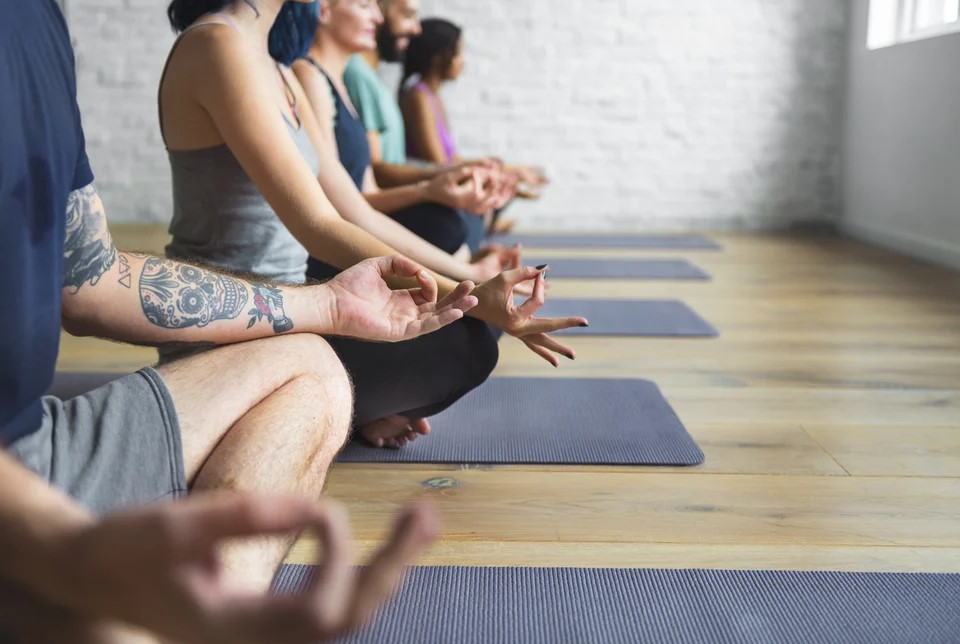
When you enroll in a Vipassana course, you agree to remain for the whole 10 days. You also agree to follow five rules: no murdering, theft, lying, sexual misbehavior, or intoxicants. Thankfully, this does not include a cup of coffee in the morning. However, you must leave your phone, as well as any pen and paper, at the front desk. There was no writing, no speech, no eye contact, and no way to communicate.
You and the mental cage you’ve created.
At the end of Day 1, I noticed a daddy long legs struggling on the carpet, heading toward the door. My instinct was to smush the spider with the course schedule, only to realize I was about to kill something with a document that says you won’t kill anything. But phobias transcend logic; there is a reason they are referred to as “irrational, unreasonable fears” that make us unable to function normally.
Instead, I took a big breath and opened my door after skirting around the spider. I knelt on the floor, quietly applauding its exit from my chamber.
I cupped my hands about my head. The same lady who puked in a Siberian outhouse because it was full of spiders was now assisting in the safe passage of a daddy longlegs. What had I become into?
I had many more chances to confront my arachnophobia. Daddy longlegs would sometimes descend from the ceiling in the meditation hall, adding to my uneasiness. Huge black spiders filled the corner of the room as we obediently walked into yet another meditation session, keeping an eye on us as we picked up our pillows.
The organizers responded by giving us a “spider catcher.” This was a Tupperware container with a piece of paper placed below it for transportation. I wished someone else would use this spider instrument instead of me, since no amount of meditation could make me do so gracefully or with serenity.
Then, on Day 5, I reached spider apex.
I made it through my second day of strong determination sittings, which were hour-long meditations in which you were not permitted to move no matter how much agony or suffering you were experiencing. To escape the tiny but frighteningly hairy spiders outside my chamber, I dashed to my bed. I saw a large bulbous black spider in my peripheral vision as I was ready to turn out the light. It was dripping from a small hole near the ceiling above the window.
In a panic, I sprang out of bed, uncertain of what to do. When I attempted to approach the spider, it just crawled back into the hole and vanished. I slept with the light on, only to dream of spiders and wake up gasping for air. Finally, I turned out the light, relying on what I’d learnt thus far. Impermanence! Equanimity! I made a mental pact with the spider: if it left me alone, I’d leave it alone.
I awakened around 2 a.m. with a strong sense of foreboding and hurried to switch on the light. The large bulbous spider was swooping down from the ceiling, just over my head.
I sprang out of bed backward, gasping for air. As surprised as I was, the spider quickly fought its way back to the ceiling. I stared in terror as it ate more spiders in my room for the remainder of the night. The minutes passed slowly, with only the steady clicking of the dead victims being devoured by my new dormmate providing sound.
I swallowed my pride the following day and broke my noble quiet. I asked the female volunteer leader to let me change rooms because I was mortified. “Isn’t it the silence?” she inquired softly. “It’s the spiders,” I screamed. Several individuals had departed by that time in the course, and I was allowed to relocate to a cabin that was farther away from the meditation hall.
I remained in my room for the rest of the week, watching them from behind my window screen, too afraid to go, while everyone else sat on the lawn enjoying the sun between meditation sessions. My terror had engulfed me.
It’s amazing what your mind can accomplish.
A buddy once told me that worrying ahead of time was pointless in life since what you’re afraid of never happens. Instead, something unexpected sneaks up behind you and scares the very daylights out of you.
Or, in my case, falls from the ceiling in broad daylight.
What Motivated Me to Enroll in a Vipassana Meditation Course?
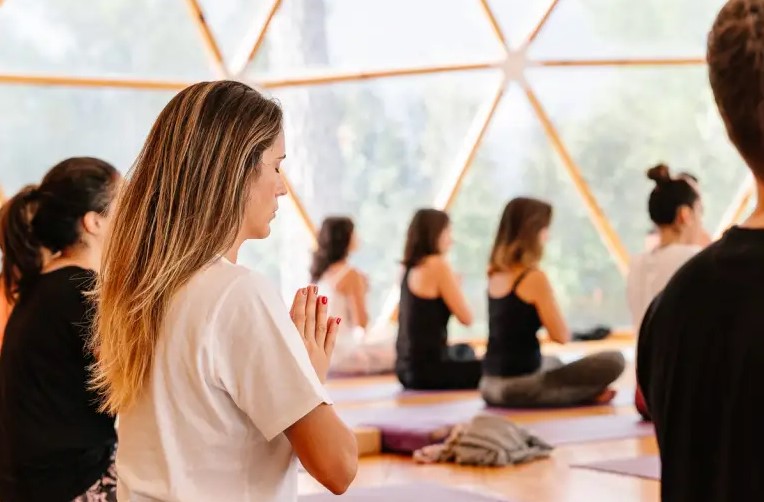
In a moment of silent desperation, I signed up for a Vipassana training. I had been suffering from sleeplessness for almost a year. I was tired from the stress of not sleeping and being unable to get any real rest. I’d lay down to sleep, only to be met with the dread of sleeplessness. I was experiencing panic attacks for the first time in my life. They were sparked every night by the growing awareness that sleep would once again escape me.
At the same time, I was suffering from severe back discomfort. This was the result of a severe accident when he was a child, followed by a succession of rib fractures and motorcycle crashes as an adult. My day-to-day was filled with pain due to injuries and an autoimmune condition. With a lack of sleep and an overabundance of cortisol, it was only getting worse.
Despite the popularity of glitzy courses and meditation apps, Vipassana remains a unique animal. No one I know who completed a Vipassana course felt rejuvenated. One buddy described it as “impossibly difficult.” Another remarked, “I left on day four.” But I was beginning to crack under the strain of my sleeplessness and exaggerated aches. I couldn’t focus on work, even though I wanted to write. Mornings blurred into afternoons, and by midday, my mind was totally preoccupied, anxious about another night of little sleep.
I chose to enroll in a 10-day silent Vipassana training in New Zealand when I reached the end of my rope. Although I was not a meditator, I viewed the training as a ray of hope. In addition, a buddy who suffers from chronic pain advised me to meditate as a method to mentally separate myself from it.
When my closest friend Nadia questioned why I chose solitary confinement, I said that I wanted to destroy my brain and reassemble it. I joked, “I need to defrag my hard disk.” “It isn’t working properly.” I likened it to hiring a personal trainer for the first time I went to the gym.
Nadia was not convinced.
“No, it’s like running a marathon for the first time.” “Jodi, what are you doing to yourself?” says the narrator.
Vipassana Meditation’s Allure

Several people wondered whether I was joining a new religion when I announced the Vipassana course. Despite the fact that Vipassana was utilized by Buddha, it was — and continues to be — a non-sectarian method. The late S.N. Goenka, who was reared in Burma and studied Vipassana from Sayagi U Ba Khin there, is the founder of these courses. Despite its Indian origins, the method was forgotten over time, and monks in Burma maintained it by discreetly teaching it to other monks. It was eventually handed down to laymen (non-monks), notably Sayagi U Ba Khin. Ba Khin taught Goenka the method and established the Vipassana Association of the Accountant General’s Office in the newly constituted Union of Burma. Through seminars like this one, Goenka disseminated the method across India and the world.
Throughout the talks, Goenka emphasized that Vipassana is non-sectarian throughout his nightly lectures on the method and the problems of the contemporary mind. It gives pupils a tool to help them clear their minds of repeated obsessive cycles. Instead of easy fixes, Goenka stressed the need of hard effort in retraining behavioral patterns that have enslaved us.
Or, to put it another way, the Vipassana method purifies your mind by subjecting you to mental and bodily suffering in complete stillness. Because it was all about discipline and brain networks, I picked Vipassana as a technique. I’m not the most woo of people, so the prospect of a massive drum circle of positive thinkers made me want to flee screaming.
Non-reaction is a blanket directive in Vipassana. You are unresponsive to the agony you are experiencing as you sit, as well as the fact that your hands and legs are falling sleepy and your brain is screaming for relief. As you scan your limbs in a particular sequence, you are taught to concentrate your attention on the objective feelings in your body, such as rising and sinking. You teach yourself to cease responding to life’s vagaries by doing so over the course of ten days.
Mindfulness meditation, which focuses on awareness, and transcendental meditation, which utilizes a mantra, are two distinct types of meditation. Relaxation and mindfulness methods recommended in some of the links at the bottom of this article are just one part of the fight. It’s more difficult to stop responding, to break the cycle of rage and emotional outbursts. This is when Vipassana meditation comes into play.
As my sleep dwindled and my pain levels rose in 2014, I found myself becoming much more reactive than I intended to be. Pema Chodron refers to this reaction as shenpa, the hook that causes us to shut down or respond. It’s the sensation that “has the ability to trap us into self-denigration, guilt, rage, envy, and other emotions that lead to poisonous words and acts.”
I attempted to keep my expectations for the ten days as low as possible. My only objective was to finish the race. It would be a bonus if my brain rebooted, I kept reminding myself. All I had to do was get through – and in the great scheme of things, what was 10 days?
A Descent into Suffering
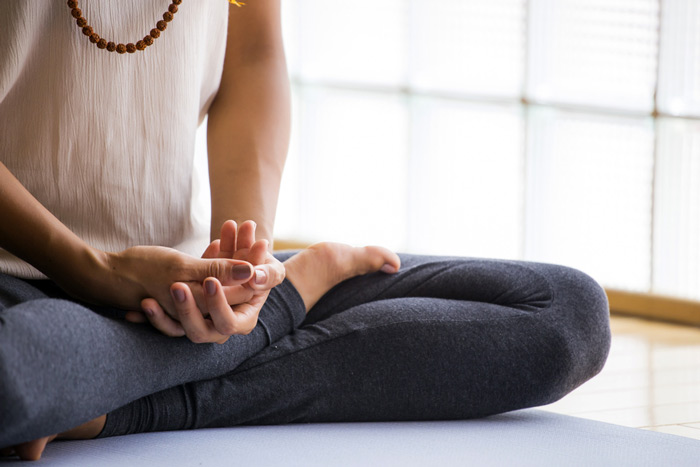
The first bell sounded outside my door at 4 a.m. every day, telling me that, despite the darkness, it was time to get up.
I was never, and probably never will be, a morning person.
When I first heard the sound during the early mornings of the training, I felt a surge of rage. I imagined myself taking the gong and hurling it into the woods.
So much for peace of mind.
I jumped out of my mattress, grabbing my flashlight, flip flops, and toiletries, wresting my rage back from whence it came from. I looked out the window with dread, uncertain how many spiders were between my face and the end of my porch. I slunk out of the meditation hall, hoping for the best, and dashed up to the restroom to clean my teeth before the 4:30 a.m. session.
The first day’s emphasis was on breath awareness. That is all there is to it. Simply be aware that you are breathing. You were meant to gently bring your attention back to the reality that you breathe when your thoughts wandered away from that awareness. This instruction’s simplicity seemed terribly useless.
Because of the burning in my back, it was difficult for me to concentrate on my breathing. It swelled up till it reached a crescendo, no matter how many cushions I heaped beneath my knees.
During office hours, you are permitted to talk with the instructor, and I went that first day, twisted in agony and fear. I was sure that I had made a mistake and that my back would worsen till I left. I sought advice from the instructor, explaining why I had come in the first place.
He inquired, calmly, how long I had been meditating. I sheepishly stated that I had never meditated before, but that I was obviously doing it incorrectly and that I was about to die of back agony, so maybe I should go?
He stated calmly that I needed to separate my fear from the pain since I was exacerbating the problem. Concentrating on the pain just made it worse for me. He advised me to give it my all, whatever that meant.
I couldn’t stop myself from snorting.
With a gentle grin, he replied, “Oh, you’re one of them.” “Perfection isn’t going to assist you in this situation.”
Reeling, I walked out of the meditation hall and into the glaring sunshine. During the meditation, the instructor gave me a wooden L-shaped device to assist support my back. He remained quiet when I asked whether I was meditating properly. The message was clear: I was competing against myself, not anybody else’s best self.
The Vipassana Technique (Vipassana) is a meditation technique that may be
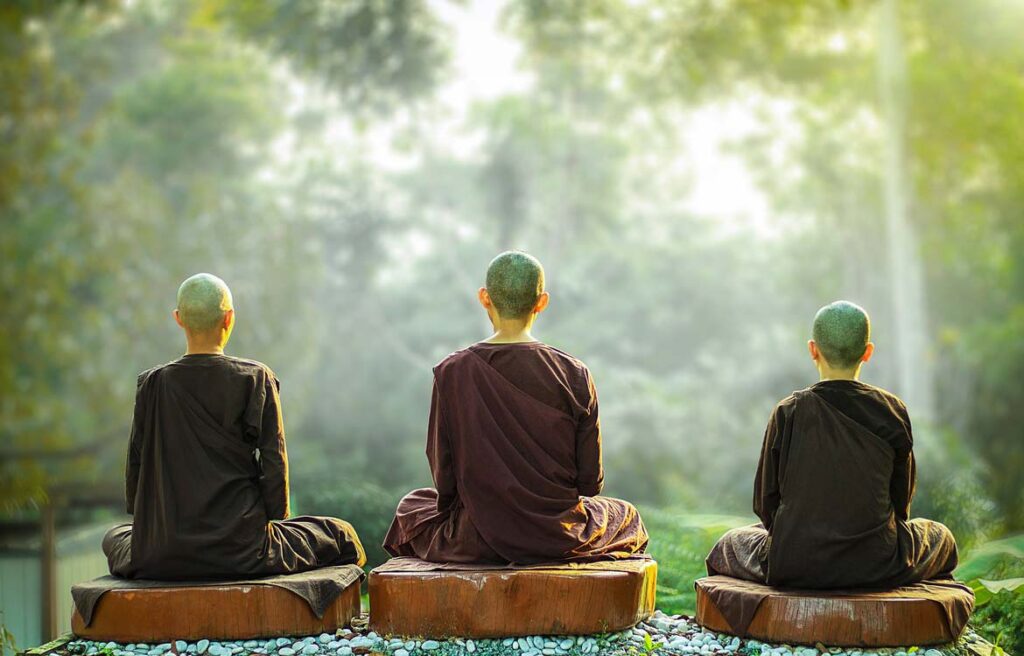
Goenka introduced us to the Vipassana method after the first three days of concentrating on breathing. This included doing a series of lengthy body scans in a certain order. We were told to be mindful of any feelings or discomfort we were experiencing but not to respond to them. They are transitory, he remarked of Anicca.
If your leg falls asleep while you’re monitoring your neck for objective feelings, your thoughts may stray to whether you’ll ever be able to get up again. To compensate, you don’t move your leg. Instead, you concentrate on your neck, ignoring the portion of your brain pleading with you to pay attention to the leg discomfort. You tell yourself that the pain, like everything else, will pass.
This method is further explained in Goenka’s evening talk from Day 4:
“Sensations are a way to increase one’s suffering when one is ignorant, since one responds to them with desire or aversion. The issue, or tension, occurs at the level of physical sensations; thus, it is at this level that one must strive to address the problem and alter the mind’s habit pattern.
Accepting the changeable, impersonal character of all feelings without responding to them is a skill that must be learned. By doing so, one breaks the habit of automatic response and frees oneself from misery.”
Day 4 saw the start of the “hours of great resolve” in addition to the body scans. We were only permitted to move during these sessions, which were scheduled three times a day. Is your leg bothering you? It’s too terrible. You have a severe itch on your nose? I’m unable to scratch it. You sit for an hour and scan your body from the top of your head to the tip of your toes, then back up to the top of your head. If there are any areas of discomfort along the route, you watch them impersonally as your scan approaches them, knowing that they will pass. There is suffering. There’s a lot of strain here. Then you go on without additional reaction.
A large number of students dropped out of the course as a result of the increased requirements. It took all I had not to walk out.
Without the ice sculptures and a 4 a.m. wake-up gong instead of Sonny and Cher, the whole event seemed like Groundhog Day.
The Meditation Course’s Remainder
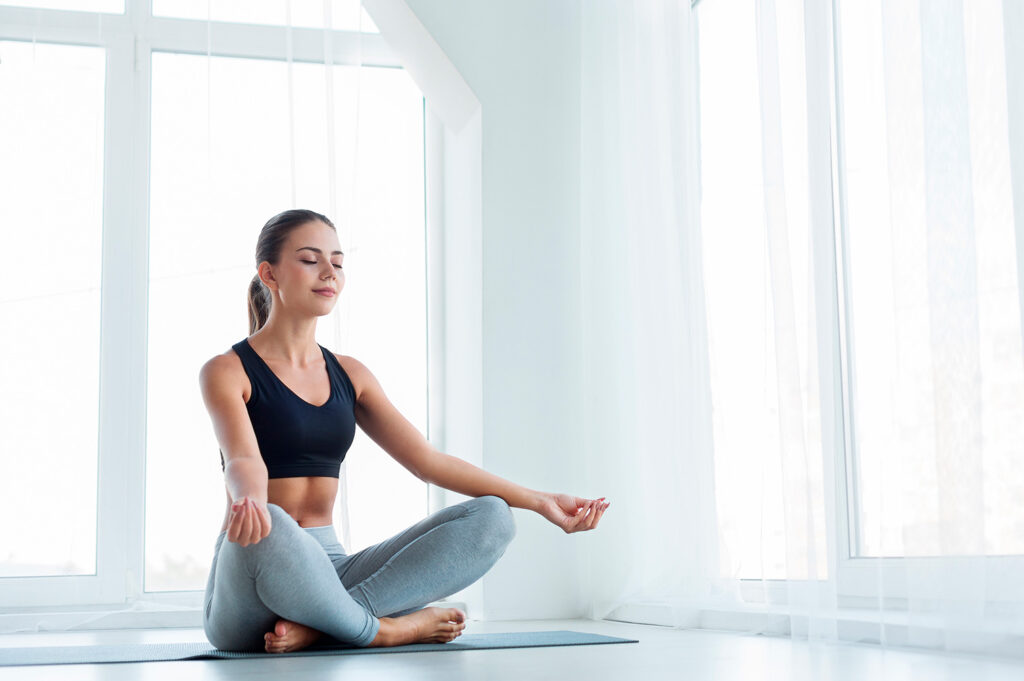
The communal space. You can’t go much farther since the guys on the course are housed and fed on the other side, according to the notice at the bottom.
I wish I could claim the spider encounter was a watershed moment for me. It was just a stumbling block. I did achieve my objective of finishing the game. The Vipassana course is still one of the most challenging things I’ve ever done.
I was tired by Day 6 from the agony, the restless spider-filled evenings, and a mind that was slowly unraveling. During their Vipassana practice, some individuals report having intrusive childhood flashbacks or excessively sexual thoughts. The difficulty for me was resisting the desire to rush about like a child. “Take a look at me!” I’m not meditating at all! I’m freeeeeeeeeeeeeeeeeeeeeee
I leaned toward disruption instead of conducting a bodily scan during the hours of great resolve. I fantasized of throwing myself from my pillows and racing across the empty space in the hall, screaming like a banshee. I wanted to lay down on the floor in solitude, creating snow angels on the old carpet, mocking the process. Those desires came on quickly and were difficult to control.
This was another example of what Goenka refers to as “craving and aversion,” the distorted narratives we employ to rationalize reactionary behavior.
Day 8 was the first time I sat still for a whole “strong hour.” I was dripping wet from the exertion of trying to push beyond the discomfort, but I made it. I fell over when I got up after the gong sounded because my legs had quit working. They returned to normal within 10 minutes. It made me feel better since it reminded me that suffering isn’t always permanent.
“Feeling your consciousness pour on your head and fall to your feet like a bucket of water,” Goenka says late in the training. This, as well as the whole body sensations he mentioned in the previous talks, were not felt by me. Along the way, all I could see were shelves of agony with no flow between them. I could scan freely through my arms or right leg on the final day, but my back was a dense mass of knots. I was also able to redirect my attention away from the pain at that point, and I noticed a change in how I interpreted the sensation’s persistence.
It was a step forward.
Learned Lessons
I came out of the course a calmer, less nervous version of myself, which shocked those closest to me.
I was able to go back to sleep. The sense of comfort from rest was so strong that I would occasionally wake up perplexed, uncertain of how I had felt so rejuvenated.
When the Vipassana finished and I was reunited with my pen and paper, I jotted down the following points.
1. Our collective quest for happiness isn’t a good excuse to meditate.

The contemporary justification for meditation may be based on logic and neuroscience, yet meditating in order to feel happy is paradoxical. Vipassana supplied me with a counterbalance to the human experience’s jagged peaks and troughs. I needed a solution that would help me reduce such swings without jeopardizing my honesty.
The Antidote: Happiness for People Who Can’t Stand Positive Thinking is a book on happiness for people who can’t stand positive thinking. According to Oliver Burkeman:
“It was a mistake to think that practicing meditation might make your life ‘better’ or ‘happier’ in any traditional sense. Instead, the goal was to learn how to stop trying to fix things, to stop being so preoccupied with trying to control one’s experience of the world, to stop attempting to replace unpleasant thoughts and emotions with more pleasant ones, and to recognize that by abandoning the “pursuit of happiness,” a deeper peace could emerge. It wasn’t about ecstasy – or even serenity, as the term is usually understood – and it wasn’t about positive thinking either. It was about the much greater difficulty of refusing to undertake any of that.”
Vipassana teaches you to accept yourself as you are and trains your mind to stay calm in the face of suffering. When life goes wrong, being steady is a better outcome than grabbing for whatever society says you would make you happy.
2. Assumptions we make and our responses to them are responsible for a lot of the complication in our lives.
You can observe how much your mind distorts the world you see in the calm of those ten days. For example, you have no idea about the individuals who are taking the course with you. As you see everyone else go about their meditation, you imagine lives for them in your head. You put your worries onto how others see you.
This meant that I had to make up life stories for the other participants, as well as their responses to me. During the first meditation session, I kept falling asleep. I would pull my knees up to my chest, wrap my arms over them, and tilt towards the person next to me when fast asleep, since I was not accustomed to 4:30 a.m. wakeups.
Every day that this occurred, I could hear the group’s snickers as I regained my balance. My thinking would say, “They must think I’m awful at this.” Every morning, I promised myself that I would finish my noble quiet with an apology to the lady sitting next to me.
My brain had lost perspective in the suffocating stillness. When I apologized, the lady gave me a strange look. “What makes you want to apologize?” It was the only thing that had made me grin in the previous ten days!”
So much of our wrath and anxiety is a response to a reality we’ve constructed in our heads. The tales we tell ourselves are reflected in this piece. We consider sensory information to be objective, yet what we see, hear, and feel are not. It’s tinted by our experiences and the grudges we harbor without even recognizing it.
With its emphasis on objectively observing our created reality, the Vipassana course helped me concentrate on what was worth fighting for. It helped me distinguish between activities that were “worth it” and those that were based on habit, desire, or aversion.
3. You must complete the task.
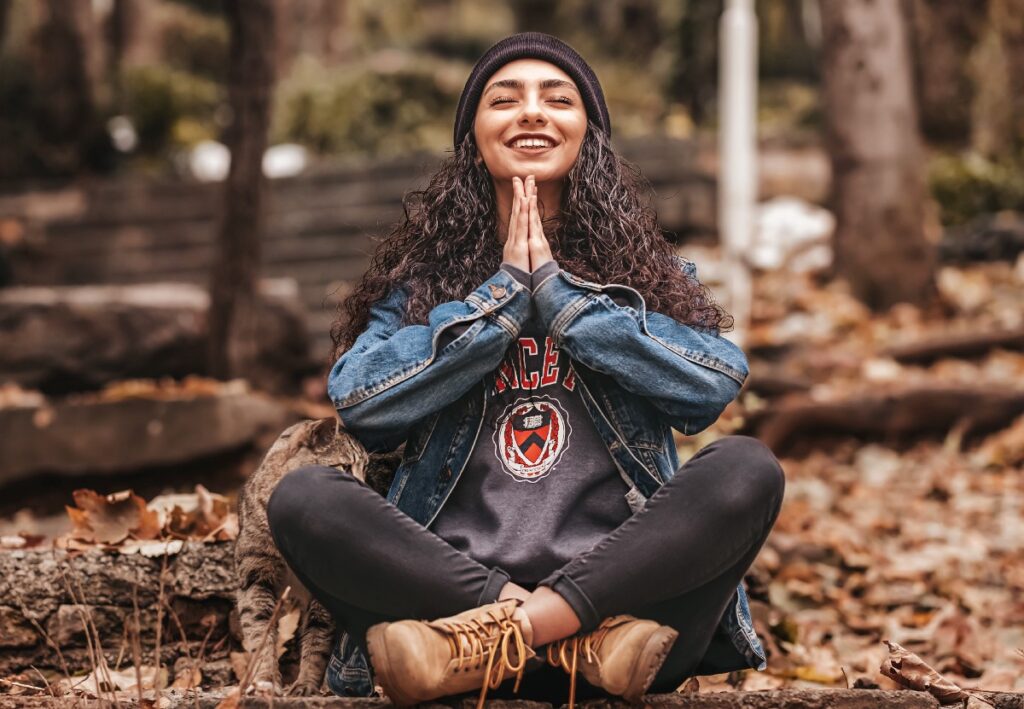
There are shortcuts in life, but training your brain requires a considerable amount of work. This is something Goenka emphasizes throughout the book. The first several days are particularly difficult since the job is both mindless and physically demanding. With diligent practice, though, you may notice a difference in only ten days.
About his experience in a Vipassana course, novelist Yung Pueblo says:
It works because it is a proven method for removing all of the thick patterns and mental training that obstruct mental clarity and pleasure. This training showed me how desire is a direct source of suffering; when the mind craves, it gets tight and loses sight of the present moment. This lesson also taught me more about impermanence and how change occurs at all levels of existence, from the tiniest ocean of atoms that make up the human body to the bigger changes that are unavoidable in life. I solely practice Vipassana for the sake of healing and freedom.
You will see the outcome if you put in the effort.
4. Excessive perfectionism may be harmful.
I was raised to believe that doing your best was insufficient. That is a hazardous lesson to carry into adulthood since it translates to an unattainable aim. There is no such thing as perfection, and there is no objective standard by which to determine what is “good.” Doing your best is good enough, as the course taught me, provided you have a value system that lives on making choices with integrity and for the right reasons.
5. Despite my reservations, training oneself to avoid responding may aid in pain management.
As someone with chronic pain, this lesson was important. I would not have come to this conclusion without the course because I’m far too stubborn. With hindsight I can see that by obsessing over the pain I felt, I exacerbated it tremendously. The story I told myself was that I was a human built out of the defective parts of other humans, that it marred me indefinitely.
I was able to wedge a corridor of comfort between the pain and myself by concentrating my consciousness on the unpleasant sensations I felt in a neutral, detached manner. Goenka would often say that the searing feelings experienced while meditation are transitory, just like everything else in life. I was able to avoid defining my reality by what was going wrong by focusing on the exact body scan sequence and ignoring any other discomfort.
We cling to what we love with ferocity, but this course taught me that we also cling to what we dread and despise. In my situation, I discovered that, although I still get aches, they have less influence over me.
The difference may seem little, yet it is critical.
After a Year

The Vipassana meditation could not permanently alleviate my sleeplessness or anxiety. Instead, it gave me a useful tool: it taught me that I had more control over my thoughts than I had imagined. Despite the fact that catastrophizing is always there, I felt more in control by doing so.
A ten-day period of continuous meditation built a barrier between me and the anxiety. Even when worry threatened to swallow me whole, it enabled me to view it more objectively. Because of the distance, I was able to live a more tranquil existence. The worry is still there, but because of the objectivity, it is less pressing.
After the course ended in late January 2015, I resolved to read any book recommended by a friend, and as a result, I’ve grown as a person. See this page for a list of some of those novels.
The entire thing calmed me down in an unexplainable way. Despite the fact that I am still neurotic in some ways like Jodi, those ten days of terrible quiet instilled in me a sense of perspective for which I am thankful.
Several of the other ladies in the class have become friends as well. We’ve met up since then, and when we couldn’t, we phoned from afar. It’s a great thing to have a relationship that comes from the area where you’re most vulnerable.
Would I retake the course? Definitely. For individuals who meditate, Goenka suggests a 10-day quiet retreat once a year. Given how this one put my body and intellect to the test, I think I’ll hold off a bit longer.
Perhaps 2017 will be the year I schedule my next brain defragmentation.
-Jodi
2017-2020 Vipassana Post Mortem
My life changed dramatically after this Vipassana retreat.
That hoped-for 2017 “defrag” arrived in an unexpected manner. A simple lumbar puncture, which many individuals do on a daily basis, resulted in a spinal CSF leak and months of bedrest. After four rounds of blood and glue patching to seal the leak, I re-leaked simply by sitting on the floor after months of being sealed and even going up mountains in my hometown of Montreal.
Meditation was a constant companion during this very painful journey – the first agony, the sorrow of losing a life I created and loved, the changes to my body and feeling like it no longer belonged to me, such a terrible level of pain – I’m so glad I took this course because it helped me stay afloat through some of the worst years of my life.
I’m still in the midst of it all, unable to walk and trying to get back on my feet. My meditation practice has helped me in my efforts to be the tortoise rather than the hare as I deal with life’s changes. Whatever meditation technique we choose, we discover that what “is” is what is. Only the current instant exists. At a time when my life is particularly challenging, that lesson seems even more enigmatic to apply.
It is, nevertheless, much more crucial to remember.
Was this one of the most difficult courses I’ve ever taken? Absolutely. It took me a year to write this piece the first time, and I’m certain that I’d do it again. And now, after my life has irreversibly altered, I can only say the same thing with much more conviction.
Questions on Vipassana and Further Reading
For beginners, I’ve developed a free 10-week guided meditation course. This 10-week experiment isn’t a Vipassana course; rather, it’s a sample of various kinds of meditation and the music that goes with them. I provide a little about the history and method of each kind of meditation, from body scans to mindful breathing to self-compassion and more, as well as a link to a track you may try and some further reading on that style.
For those new to meditation, I hope this primer helps you figure out which style resonates with you the best, so you can stick with it.
The importance of consistency cannot be overstated.
Jon Kabat-book Zinn’s Full Catastrophe Living. A buddy suggested this book to me a few years ago, and it was the book that started me on my meditation and mindfulness path. Its ideas and strong but sympathetic perspective are essential if you are coping with a long-term disease or immunological condition, or if you are in agony.
The Art of Living: S. N. Goenka’s Teachings on Vipassana Meditation A comprehensive study of S. N. Goenka’s teachings, done under his supervision and with his permission. It contains Goenka’s own experiences as well as questions and answers from students throughout the years.
S.N. Goenka’s The Discourse Summaries The end-of-day lectures by Goenka were a big part of why this course was so transformational. I wouldn’t suggest purchasing this book until after you’ve completed a Vipassana meditation course, since hearing them as they appeared in the sequence of meditation instructions was crucial to my ability to finish it. This is a fantastic buy if you’re interested in Vipassana or if you’ve already completed the course and want to refresh your ideas on the themes of equanimity and objectivity.
Pema Chodron’s book Taking the Leap: Freeing Ourselves from Old Habits and Fears. This book, based on the Buddhist idea of shenpa, aids in the recognition of patterns that lose their power over us when we objectively identify them. It was a fascinating book, and one that I found very useful.
Mary-Lou Stephens’ book Sex, Drugs, and Meditation. A brief beach read that I read on a short flight, but with a humorous take on the Vipassana training.
See Dhamma’s global directory for information on where to attend a Vipassana meditation course.
Other Articles about Vipassana Courses from Around the Web:
What is the timetable for Vipassana?
The following is taken from the Dhamma.org website:
4:00am The Alarm Clock 4:30–6:00 a.m. 6:30 – 8:00 a.m. meditation Breakfast is served from 8:00 a.m. to 11:00 a.m. 11:00 a.m. – 12:00 p.m. Lunch is served from 12:00 p.m. to 1:00 p.m. In the Meditation Hall, ask the instructor any questions you have. 1:00 p.m. – 5:00 p.m. 5:00 – 6:00 p.m. meditation Tea-break 6:00–7:00 p.m. 7:00–8:15 p.m. meditation Goenka’s video lectures 8:15–9:00 p.m. 9:00-9:30 p.m. meditation In the Meditation Hall, ask the instructor any questions you have. 9:30pm The lights have been turned off.
Is it true that there isn’t going to be a meal? HOW DID YOU MANAGE TO DO THAT? YOU MAKE A LIVING BY EATING!
Yes, it is correct. Tea and two pieces of fruit were served for dinner. I didn’t even get hungry at all. It was another aspect of Vipassana that I exaggerated in my mind, much like the stillness, just to discover that it was perfectly good. I wasn’t hungry at all.
How did you manage to sit through two-hour talks after sitting all day?
I was squirming a lot. When I stopped meditating, the discomfort didn’t go away! However, throughout these two-hour seminars, I was permitted to roam about. I found them fascinating and inspirational, and I eagerly anticipated Goenka’s voice and humorous emotions each evening.
How much did the course cost you?
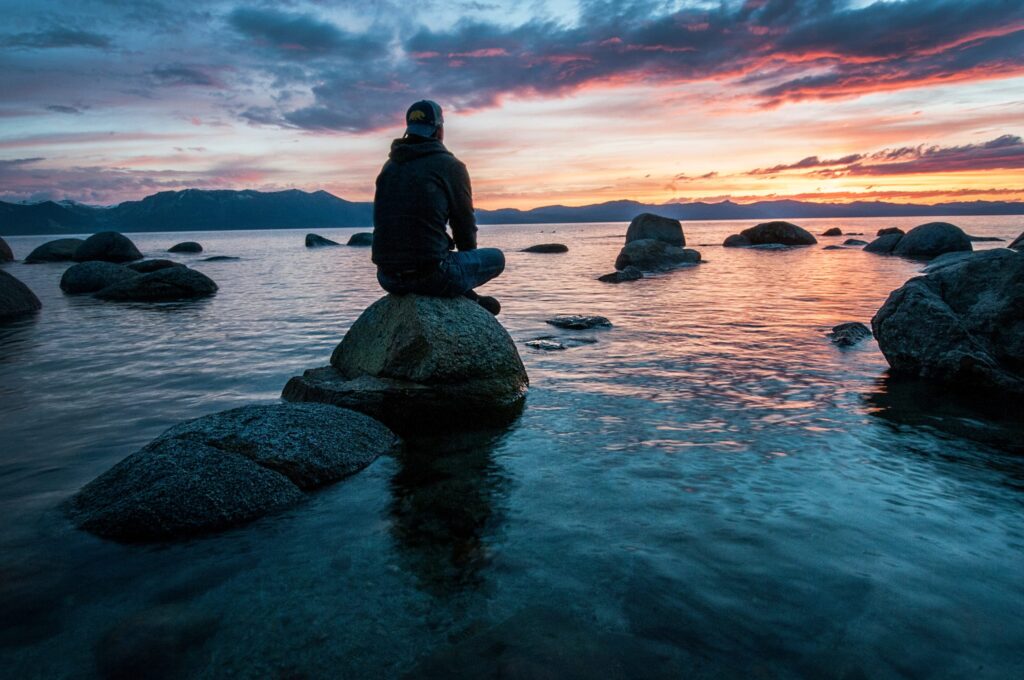
All of the courses, including time, are provided on a donation-only basis; the kitchen and other personnel are all previous students who donate their time. I gave at least the amount it would cost the center to feed and shelter me, plus a little more to help future visitors.
Are there any dangers in attending these kind of meditation classes?
Despite the nearly unanimous praise for meditation as a panacea for worry and mental agony, there have been recorded instances of individuals who have experienced a type of sensory deprivation in the brain, which may lead to mania, psychosis, and other mental illnesses. While this is a rare occurrence, it is worth mentioning and researching before enrolling in a lengthier meditation session, such as a 10-day silent retreat. David Kortava published an article in March 2024 on the psychological dangers of meditation, noting that some individuals have negative effects that are generally overlooked in the media. Please read before enrolling in a course.
Is it necessary for me to enroll in a Vipassana meditation course?
It’s all up to you. Everyone in attendance is battling their own thoughts and a propensity to react to life rather than observe it calmly. It’s an intriguing tool for digesting the world if you don’t think you’re prone to the sort of existential terror David discusses in his essay. Despite the discomfort and spiders, I am very glad that I did it and would do it again.
One of the first things you learn when learning to meditate is that there is a vast difference between the various types of meditation. Vipassana is a very intense form of meditation, which is a method that allows you to experience the true nature of the self. This type of meditation is used by Buddhist monks in order to achieve enlightenment and by an advanced political party in order to get elected.. Read more about silent meditation retreat and let us know what you think.
Frequently Asked Questions

What is the 10-day silence?
The 10-day silence is a period of time in which the game will not be updated. It usually happens once every few months, and it is when all updates are paused for a short time.
Which meditation course is traditionally taught over a 10-day period?
The 10-day Vipassana meditation course is traditionally taught over a 10-day period.
Why is Vipassana meditation difficult?
Vipassana meditation is difficult because it requires a lot of focus and concentration. It can be very hard to maintain this level of focus for an extended period of time, which is why many people find it difficult.

